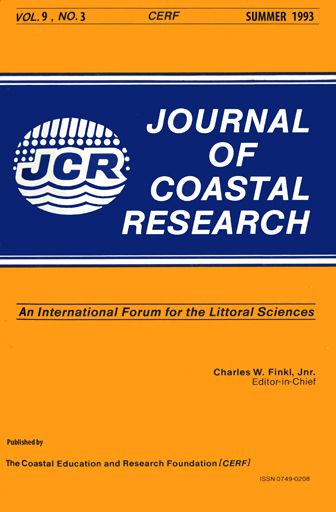Variation in Ebb-tidal Delta Geometry along the Coast of the Netherlands and the German Bight
Keywords:
Tidal shoals and channels, inlets, tidal currents, wave actionAbstract
The morphology of the ebb-tidal deltas along the Dutch and German North Sea coast is examined in relation to wave, offshore and inshore tidal regimes. Remarkable differences exist in the shape of shoals and tidal channels in the ebb-tidal deltas along the coast from the SW Netherlands to the German Bight. The large ebb-tidal deltas along the western Wadden Islands have a seaward protruding shape strongly oriented to the left with respect to the offshore direction (or updrift with respect to the direction of the general regional longshore drift). Ebb channels also turn to the left in their most seaward part. On the other hand the ebb-tidal deltas along the southwestern coast of the Netherlands as present before the tidal inlet closures of Delta Project showed a sharp-edged triangular shape pointing landward. Their ebb channels bifurcated seaward, orienting updrift and downdrift on both sides of the ebb-tidal deltas. It is shown that these variations are due to differences in interaction of offshore tidal currents and inshore tidal currents between the two areas. In the original ebb deltas of the SW Netherlands, the ebb channels bifurcating to the left are more pronounced than the channels bifurcating to the right. This is probably related to a significant decrease in tidal range along the coast to the north. In the Wadden Sea the small tidal deltas, in contrast to the large ebb tidal deltas, protrude downdrift. This is due to the large longshore component of wave energy flux relative to the small tidal prisms through the inlets. A descriptive model of ebb-tidal delta geometry is proposed, which considers the relative influence of waves as compared to tidal currents, wave direction and the interaction of offshore and inshore tidal currents.


